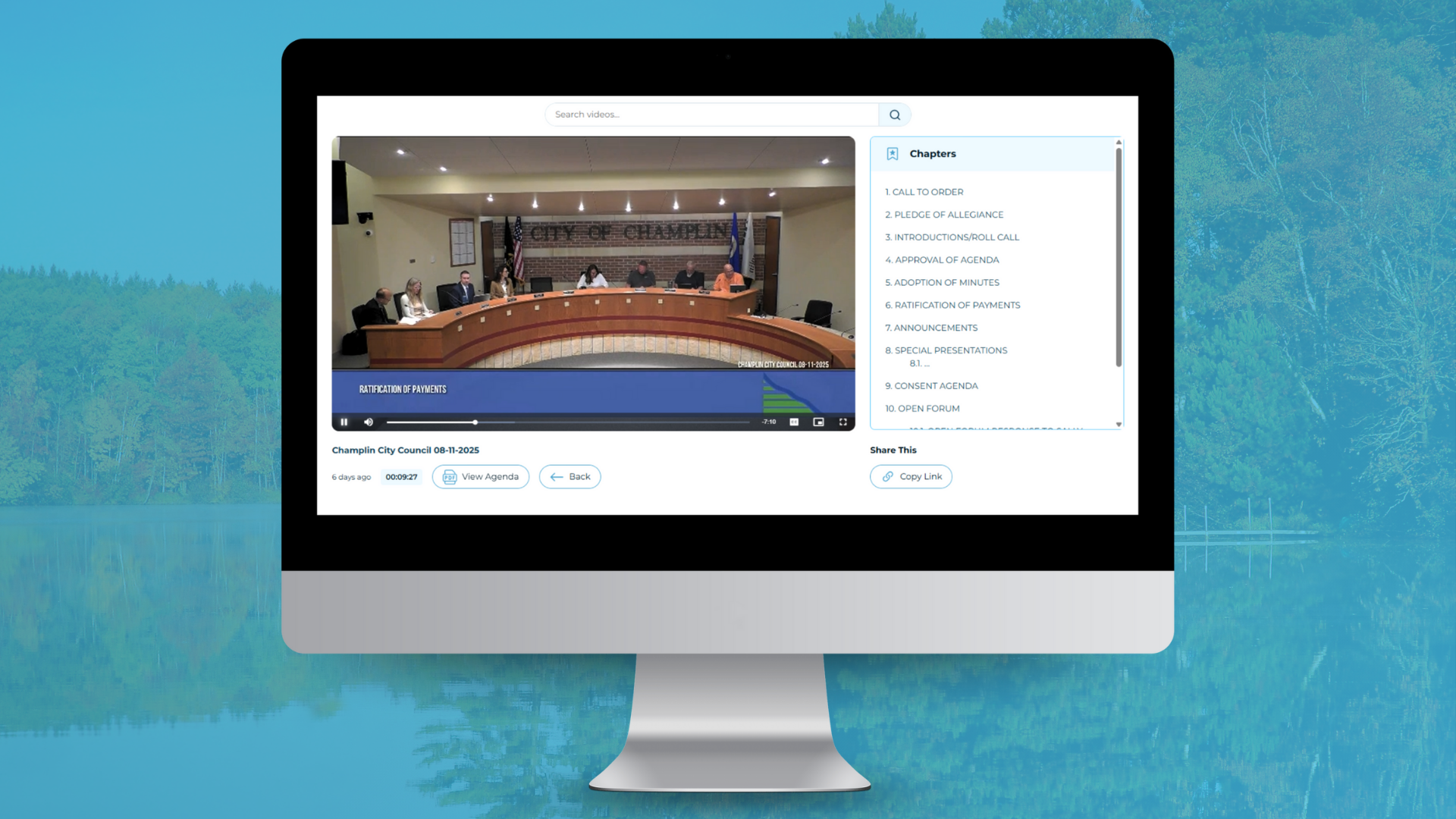
City governments across the country are rethinking how they deliver video to residents. For most communities, live streaming council meetings, recording public hearings, and archiving community events are nothing new. But the way these videos are organized and presented online can make the difference between a frustrating search and an empowering civic resource.
Improving access was exactly what Quad Cities Community Television (QCTV) set out to accomplish when it rebuilt its website and video platform earlier this year. According to Patrick Cook, technology manager at QCTV, the project wasn’t just about refreshing the look and feel of the website. It was about creating an integrated media workflow that made sense for staff while providing residents with a modern and intuitive way to access video content.
Chapters Improve Accessibility
The new website went live in the spring after about six months of planning. One of the most impactful changes was the adoption of chapter markers for government meetings.
QCTV’s site offers easy access to its four city channels (Andover, Anoka, Champlin, and Ramsey). On the homepage, each channel highlights its most recent meeting, which is available on demand. Instead of forcing residents to scroll through hours of video, chapters allow viewers to jump directly to the agenda item they care about, whether it’s a budget discussion, a zoning update, or a community recognition.
For Cook and his team, this wasn’t just a usability feature. Instead, it was a chance to eliminate duplicative work. “We’d had a rebuild of our website on our radar for a number of years,” he said. “We wanted to maximize and improve the customer experience on our website and make sure we have seamless integration with Cablecast for staff efficiency.”
In the past, staff had to manually add timestamps on the website. By using Cablecast API, the web developer was able to incorporate dynamic content feeds from Cablecast’s broadcast automation platform into the website design. Now, chapter data flows directly from their broadcast automation system into the website, cutting out extra steps and ensuring that every meeting is searchable and well-organized.
This approach highlights a broader trend toward automation in media workflows for government. With shrinking budgets and rising expectations, city media teams need tools that let them deliver high-quality public access video without doubling their workload.
Smarter Playlists, Better Search
Search is another game-changer. Netflix and YouTube have made navigation simple, and residents expect the same from their city websites.
With QCTV’s new system, residents can type in keywords, such as the name of a festival or a specific board meeting, and instantly see relevant VOD results. For busy community members, this type of functionality is critical. It shows how government media website strategies are evolving to meet the expectations set by commercial streaming platforms. “Cablecast truly maximized the user experience for searchability,” Cook added. “And it was deliberate, trying to make sure that it looked and felt like what people are used to.”
The new QCTV site also takes advantage of dynamic playlists. Instead of manually curating content on the website, staff can build playlists using Cablecast and see those updates reflected online instantly. That means fewer errors, less back-and-forth, and faster turnaround for getting content in front of the community.
Collaboration Keeps Focus on Residents
Behind the scenes, this kind of transformation requires more than technology. Cook emphasized how important collaboration in local government media was to the success of the project. From technical support staff to outside vendors, the team worked together to ensure that everything from chapter markers to live streams functioned seamlessly.
The result is a platform that not only looks modern but works efficiently for the team running it. Meetings go live, recordings populate quickly, and staff can focus on improving service rather than troubleshooting clunky processes.
QCTV’s experience underscores why cities everywhere are revisiting their digital media strategies. By combining automation, thoughtful design, and strong collaboration, local governments can create video portals that meet resident expectations while keeping staff workloads sustainable.
Whether it’s adding chapters to council meetings, refining VOD search, or streamlining workflows behind the scenes, these improvements make public access video more usable, engaging, and impactful. For IT directors, AV specialists, and communications staff, the lesson is clear: Modern video platforms are an essential part of effective local government media strategies.
Event Replay - Demystifying Closed Captioning: What WCAG 2.1AA Really Requires for Government Video
Get clarity on WCAG 2.1AA captioning requirements. Learn what’s required, what’s recommended, and how to keep your government video content compliant.
.png)







.png)
.png)




